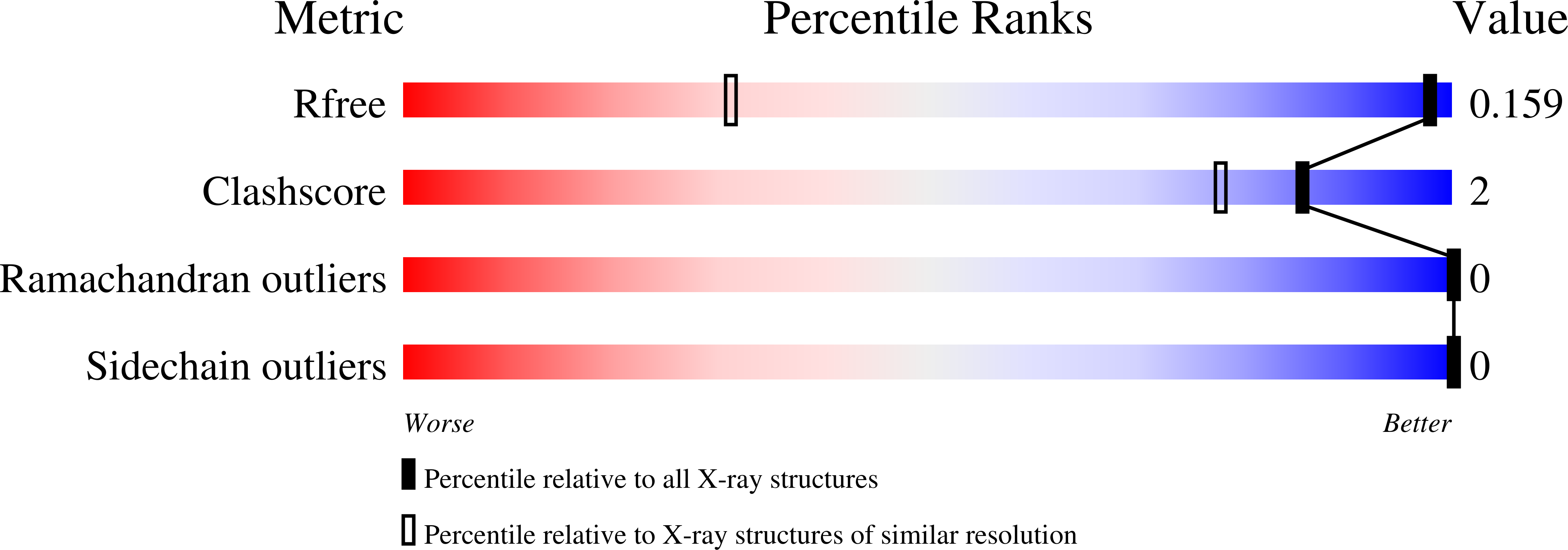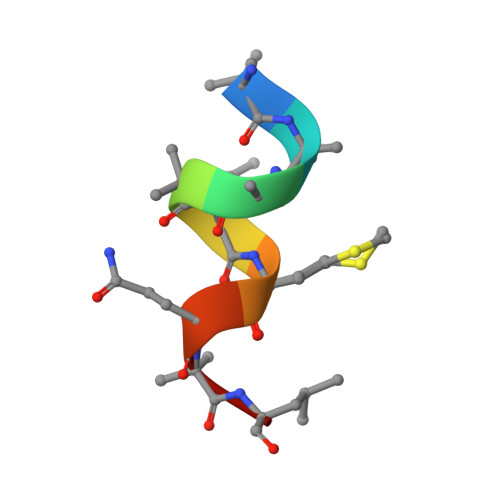Assembly of pi-Stacking Helical Peptides into a Porous and Multivariable Proteomimetic Framework.
Heinz-Kunert, S.L., Pandya, A., Dang, V.T., Tran, P.N., Ghosh, S., McElheny, D., Santarsiero, B.D., Ren, Z., Nguyen, A.I.(2022) J Am Chem Soc 144: 7001-7009
- PubMed: 35390261
- DOI: https://doi.org/10.1021/jacs.2c02146
- Primary Citation of Related Structures:
7TLS, 7TLU, 7TM1, 7TM2, 7TMA, 7TME, 7TMH, 7TMI, 7TMJ, 7TMK, 7TML - PubMed Abstract:
The evolution of proteins from simpler, self-assembled peptides provides a powerful blueprint for the design of complex synthetic materials. Previously, peptide-metal frameworks using short sequences (¡Ü3 residues) have shown great promise as proteomimetic materials that exhibit sophisticated capabilities. However, their development has been hindered due to few variable residues and restricted choice of side-chains that are compatible with metal ions. Herein, we developed a noncovalent strategy featuring ¦Đ-stacking bipyridyl residues to assemble much longer peptides into crystalline frameworks that tolerate even previously incompatible acidic and basic functionalities and allow an unprecedented level of pore variations. Single-crystal X-ray structures are provided for all variants to guide and validate rational design. These materials exhibit hallmark proteomimetic behaviors such as guest-selective induced fit and assembly of multimetallic units. Significantly, we demonstrate facile optimization of the framework design to substantially increase affinity toward a complex organic molecule.
Organizational Affiliation:
Department of Chemistry, University of Illinois at Chicago, Chicago, Illinois 60607, United States.
















